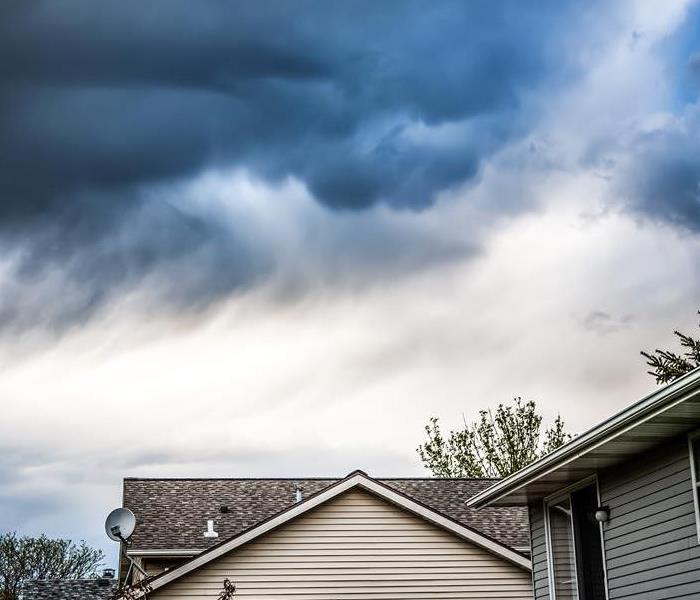Tips for Minimizing Water Damage During Severe Storms
9/21/2023 (Permalink)
Severe storms have the potential to wreak havoc on homes and businesses, causing significant water damage. The key to mitigating the effects of water damage is preparation and quick action. In this blog post, we will discuss some essential tips for minimizing water damage during severe storms.
Maintain Gutters and Downspouts
Regularly clean and maintain your gutters and downspouts to ensure proper water flow. Clear any debris that may block the gutters and downspouts, allowing rainwater to drain effectively. This helps prevent water overflow and reduces the risk of water seeping into your home or business.
Consider installing a sump pump in your basement if you live in an area prone to flooding. A sump pump automatically removes water that collects in the basement, helping prevent extensive water damage. Make sure to test and maintain your sump pump regularly to ensure its proper functionality during a storm.
Seal Entry Points
Water can find its way into your home or business through even the smallest openings. Inspect your property for any cracks or gaps in windows, doors, and foundations, and seal them with weatherstripping, caulk, or other suitable methods. This will minimize the potential entry points for water during a storm and help protect your property.
In areas prone to flooding, it is wise to elevate your valuable belongings and important documents. Raise furniture, electronics, and appliances onto blocks or higher surfaces to keep them out of the path of potential floodwaters. Similarly, store important documents in waterproof containers, preferably at a higher level.
Install Backup Power Sources
During severe storms, power outages are common, which can hinder your ability to pump out water or address other emergency situations. Consider installing a backup power source, such as a generator, to ensure that crucial systems like sump pumps, dehumidifiers, and emergency lighting continue to operate.
If your property is situated on a slope, make sure you have proper drainage channels in place to direct water away from your home or business. This can include grading the landscape, installing French drains, or utilizing other drainage systems. Effective drainage will help minimize the pooling of water near your property, reducing the risk of water damage.
Secure Important Documents Digitally
In the event of severe water damage, important documents like insurance policies, birth certificates, and financial records can easily be destroyed. To safeguard these documents, consider creating digital copies stored securely in the cloud or on an external hard drive. This ensures that even if the physical copies get damaged, you have easy access to the digital versions.
Stay informed about severe weather conditions by monitoring local weather reports and alerts. Familiarize yourself with emergency plans and evacuation routes in your area. Create an emergency kit with essentials like non-perishable food, water, flashlights, and first aid supplies. Being prepared allows you to respond quickly and effectively during severe storms, minimizing potential water damage.
Minimizing water damage during severe storms requires proactive measures and preparedness. By maintaining gutters and downspouts, installing a sump pump, sealing entry points, you can greatly reduce the risk of water damage to your home or business. Remember, quick action during a storm can make a significant difference in mitigating water damage and preserving your property.





 24/7 Emergency Service
24/7 Emergency Service
